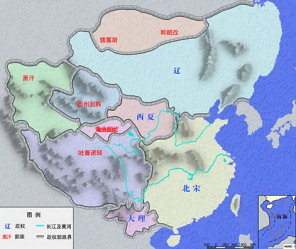| How was Liao Dynasty founded? The Khitan minority was an ancient nomadic tribe that lived in Northern China. They were first mentioned in historical records in 389 during the Northern Wei Period.As early as the 4th century, C.E., the Khitan, like other pastoral nomads, depended largely on their animals for survival, though a few tribes supplemented their incomes by fishing and farming. By the early 7th century they sought to establish their own state on China's frontier but failed due to the strong Tang resistance (618-907). As a result, the Khitan tribe was brought under Chinese rule. After the decline of the Tang, the Khitan tribe frequently attacked its neighbors, capturing people from other states that rapidly boosted its power. | 
|
In 916, Yelu Abaoji, the chief of the Khitan tribe, established the Khitan Kingdom and proclaimed himself emperor. Historically, Yelu Abaoji was called Emperor Taizu. Two years later, Yelu Abaoji based his capital north of the Xar Moron River and named it Huangdu (imperial capital).
In 947, Emperor Taizong renamed his dynasty the "Great Liao". In 983, Emperor Shengzong revived the name Khitan. In 1066, Emperor Daozong restored the name "Great Liao."
After the founding of the kingdom, Abaoji gradually conquered its weak neighboring tribes. In 926, he conquered the Uigurs in Ganzhou and captured the Bohai State.
Emperor Taizong (Yelu Deguang) reigned from 926 to 947. During this period, the Liao Dynasty reached Manchuria and the sixteen prefectures below the Great Wall from the Mongolian border. The area south of the Great wall remained outside Chinese control for more than 400 years. Although this posed a threat to the Northern Song (960-1127), the region acted as a center for cultural exchanges between the Chinese and northern peoples during the period.
After obtaining the sixteen prefectures, the Liao based its alternate capital in Yanjing (today’s Beijing). Taking Yanjing as its base, the Liao began its expansion to the Central Plains. In 946 it took Kaifeng, the capital of the Song Dynasty, and proceeded to attack the weak troops of the civil-oriented Song government. However, due to strong resistance in the Central Plains, the attempt was abandoned. |